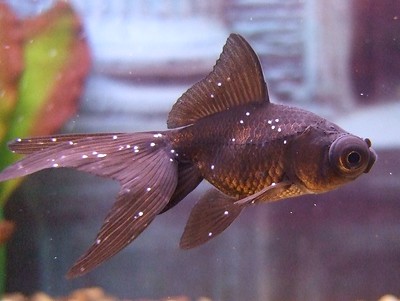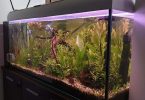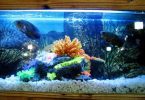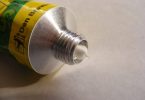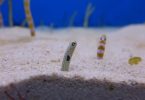Table of Contents
The ich is a major disease that is common to fishes. Simply put, the ich basically is a parasitic ailment that happens on the body of the fish, especially on its gills and fins.
Description of the ich
The ich is a white disease that is local, as an external/outward parasite, it attaches itself to the body, gills, and fins of the fish in a capsule like appearance that is white, and is mostly below one meter in when measured by diameter. Once the ich has finished feeding off the body of the fish, it falls off the fish as it grows to maturity and then multiplies itself immediately. Once the process of its replication and multiplication finishes, more than one hundred new protozoa of ich are released in the water as the cyst open. These new ich swim for at least three days until they reach a new host.
It is best to detect the ich as soon as it begins and treat it immediately, which is the only way the fish can heal and recover fully.
What causes ich on fishes?
From the description, the ich is mostly passed from aquarium to others through plants, fishes, ornament, and even equipment for repair like the nets or vacuum cleaners.
A healthy fish can live with a host parasite for a long time. The Healthier the fish the more difficult to reproduce, which ultimately keeps their population under control. Newly added fishes with a weak immune systems are at greater risk of contracting the parasite.
Unexpected emergence of Ich without new arrival is often caused by a decrease in water parameters that weakens the immune system of fish.
Excess waste, nitrates, fluid pH, ammonia, low-soluble oxygen content and other stressors will lower fish antibodies and can lead to possible outbreaks that can be avoided with good aquarium maintenance. However, the parasite must be present for the disease to develop.
Life Cycle of the ich
The ich has three stages in its life cycle
The stages in the life cycle of this ciliate parasite are as follows:
- The Trophont Infestation
- The Reproductive Tomont
- The infective Theront.
The Trophont Infestation:
At this stage, the trophont lives inside the body of the fish, bringing damage to the fish by destroying the cells and the tissues so much that the fish often dies from it. Like in parasitic relationships, the ich benefits from the host and still harms it.
The Reproductive Tomont:
After benefiting from the host, the trophont matures, dettaches itself from the host, and then attaches to the bottom of the aquarium and to its sides, then it secretes what is best called a cyst wall, with which if forms a reproductive tomont. Each of the tomont cuts one cell in two, and grows through different stages to produce about one hundred to one thousand theronts within a cyst.
The theronts that have been affected emerge from cysts and swim through the water in search of a fish or host it can attack. These theronts swim for about three days, and will still survive without any host, but once they find a host, they penetrate the epithelium, become trophonts, feed, until they mature and the cycle continues.
How to spot Ich on fish
Its symptoms include the presence of white spots resembling a sprinkle of salt grain on the body and gills, frequent scraping of the body against objects, loss of appetite, and abnormal hiding behaviours.
Sometimes in different cases the ich is present in just the mouth and the gills, but not the wings and the skin. If Ich develops in the gill of a fish, it becomes quite hard for it to breathe. You can even see your fish moving up in the aquarium when there is oxygen in excess, or even expelling air from the tank surface.
While the ich progresses, the fish gets lazier and moves quite slower, you will alos notice colour changes in your fish. The fish starts to reject food as the infection grows, and scratches as indication of the parasite ich because the white spots are itchy. Sadly, the fish is unable to scratch because it has no hands, so it deliberately brushes its skin towards an object to prevent it from itching, this process also leads to damaged skin.
Hence do not assume your fishes are safe especially when there is a trace or a trail of ich in the fish tank.
How to treat fish
The whole process happens within two weeks, higher temperatures shorten its cycle and the lower temperature elongates the cycle, so it becomes expedient to increase the temperature of the water as it reduces the progress in the cycle of the ich.
Proper treatment needs to be given to make sure the entire parasite is gone and aquarists have to be on the lookout for other ailments that can happen as a result of the damage that is done to the skin and tissues.
While nothing can be kill the ich naturally, a few chemicals are able to handle the situation. Various brands of the formalin is a chemical that can kill the parasites and is good for the tanks.
Instructions on dosage:
When treating the catfish or the tetras, the dose should be divided into two halves, the treatment should last for a maximum of fourteen days and a minimum of ten days, to make sure that the ich are all dead. Also, a partial replacement of water is required, the temperatures should be at level that is higher than the normal level to accelerate the speed of the life cycle of the parasite.
Do not practice filtration of carbon as it will neutralize the chemicals.
Another treatment available is the total removal of the fish.
Looking at the cycle of the ich, being able to identify parasites when they are most vulnerable will help to fight the disease in time. Usually, each ich parasite grows in fish of various sizes, some of which you can see with your naked eyes and others that you cannot. Those you can see will appear as white dots especially on one fish during the first wave, and then present on more fish on subsequent cycles.
Tomites, the stage at which the fishes get infected, in the life cycle of the ich come from the trophonts that tear up from the fishes that have been affected and fall to the tank bottom. When there is no fish to be attached to, the parasites die within forty-eight hour of emerging from the trophonts. Hence this makes removing all the fishes from the tank an effective way of removing the ich.
Within eighty degrees Fahrenheit, the ich dies when there is no fish within two days. It is also recommended to keep the tank empty for four days while the temperature is at eight degrees Fahrenheit. This method is also effective especially when there are few fishes in the aquarium, or when the aquarium has a large capacity that makes it easy to carry water.
How long does ich on fish stay?
Ich stays in the fish’s body for 5 to 6 days before it falls into the water. Healthy fish can support several waves of infection with treatment. However, if left unresolved or if stressed, your fish may start to die within a week or two of serious infection.
How quickly you intervene when you see white spots on your fish, and how potent the remedies you are using, determines how long it will take for your fish to heal or succumb.
How Long Does Ich Last After Treatment?
The full life of ich lasts about three weeks, so if your fish contracts it during the first wave and you treat it, your fish should be cured within a month or more.
However, you may believe that because the white spots disappear that your fish is healthy, the spots can be removed by rubbing or cleaning. For that reason, continue to treat your fish for a while, after the spots have disappeared. Also, remember to keep the water in good condition and feed your fish healthy food.
Can humans be affected by the ich?
Because humans participate in the process of getting the ich out of the water, it is necessary to know if humans can get infected too. However, humans cannot be affected by the ich, neither can they be infected, but it is necessary to wash the forearms and the hands well so that one does not transmit the ich to another aquarium in the process. More so, there should be no sharing of equipment like the nets and the sponges between aquarium tanks when this happens, if such must happen, then the tools must be disinfected with chlorine and hot water, then the tools can be put to use once they are completely dry. .
How to prevent ich in fish
To prevent ich from happening, one needs to put the fishes in separate tanks for a period fourteen days before adding them to the regular tank again.
In the absence of separation, the prophylactic treatment can be introduced, this can be malachite green or methylene blue when a new fish is added to the tank, and within four days it can reduce infection. More so, new plants should be treated to avoid the cysts from the ich.
Adequate setup of your fish tank such as avoiding the fluctuations of temperature, keeping good water in the aquarium, and making healthy food available is an effective way of preventing the ich from penetrating the tank as well as other kinds of aquatic diseases.

